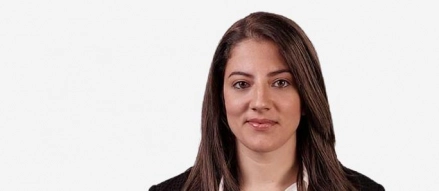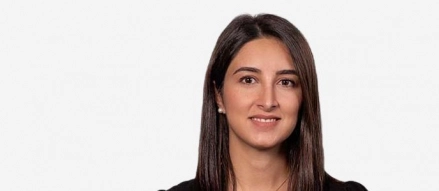Beneficial ownership came under the spotlight following the low score Malta obtained in that area in Moneyval’s 2019 Mutual Evaluation Review. The issue of beneficial ownership continued to persist and resulted in one of the published reasons for Malta being greylisted by the FATF. One of the subsequent action points agreed upon, refers to the requirement that Malta continues to demonstrate that beneficial ownership information is accurate, and that appropriate sanctions are applied to legal persons and gatekeepers who do not comply with their obligations in relation to beneficial ownership information.
Why is Beneficial Ownership so important?
Anonymity enables illegal activities to take place hidden away from governments and law enforcement authorities. Criminals make use of complex organisational structures - which, more often than not, are cross-border - designed to obscure their ownership and control of illicitly obtained assets. Therefore, when establishing a business relationship or carrying out an occasional transaction, it is critical for subject persons to correctly identify the beneficial owner of legal entities to prevent their illicit misuse. This should not only be done to satisfy their legal obligation, but also to ensure that subject persons are not associated with criminal activity, which may potentially lead to serious reputational and financial repercussions.
What is the requirement?
The requirement to identify beneficial ownership stems from ‘Recommendation 24: Transparency and beneficial ownership of legal persons,’ one of the FATF’s 40 recommendations. Locally, this requirement is set within the Prevention of Money Laundering and Funding of Terrorism Regulations (PMLFTR) and the Implementing Procedures (IPs). As part of the customer due diligence measures, all subject persons must identify the ultimate beneficial owners and take measures to verify their identity. In the case of corporate vehicles, this should also cover the respective ownership and control structure. The aim of these provisions is for subject persons to understand who they are doing business with, and the risks such relationships pose.
What is a beneficial owner?
The PMLFTR defines a beneficial owner as “any natural person(s) who ultimately owns or controls a customer and/or the natural person on whose behalf a transaction is being conducted.” This can occur through direct or indirect ownership. Ownership and control is measured by applying a threshold of 25%+1 of shares, voting rights, or ownership interest. If no owner can be identified through these means, the beneficial owner may be a person who exercises control via other means. This can include the exerting of dominant control through shareholder agreements or rights attached to shares; through a group of individuals who collectively own more than 25% and have an arrangement to exercise their rights collectively in the same manner; or by having the right to appoint or remove board members or the CEO.
If no beneficial owner can be identified after going through the above processes, those holding the position of senior managing officials are deemed to be the beneficial owners.
Concealment of beneficial ownership in practice
Criminals generally use a combination of methods to conceal their beneficial ownership in legal entities. This can take place through layering, direct ownership chains, as well as professional intermediaries and third parties exercising control on their behalf. The longer the chain of entities standing between a legal vehicle and its beneficial owner, the harder it is to identify the beneficial owner, given the need to establish who controls each of the layers.
Beneficial ownership information may be obscured using a combination of legal arrangements and financial instruments. The most common is the use of shell companies, i.e. inactive companies which typically have a post-box address and no employees. Shell companies are attractive to criminals due to the ease with which they can be set up. On the other hand, shelf companies are entities which have already been incorporated, and which may have been active in the past, but which are generally left dormant until needed. Shelf companies have the appearance of having corporate longevity, thus boosting investor or consumer confidence.
Other means of obscuring ownership is the use of front companies. These are legitimate businesses which are used by criminals to integrate illegitimate funds with legitimate income. This involves company taxes being paid on illegitimate income to “clean” the wealth. Trustees is another type of arrangement used to control assets in a trust. The settlor and protector of the trust may exert control or influence over it, leading to complexities when determining who the beneficial owner of the trust is.
Additionally, financial instruments may be used, such as bearer shares. These assign ownership of an entity to the person who physically possesses the bearer share certificate. Given that the ownership cannot be determined through a central registry, it is very difficult to determine the beneficial ownership of legal persons controlled by bearer shares. Informal nominee shareholders and directors, also known as strawmen or frontmen, perform the same function as formal nominee service providers, i.e. to protect or conceal the identity of the beneficial owner of a company or asset. However, their connection with the true shareholder or beneficial owner is often of a personal, rather than a professional nature, and may include spouses, children, extended family, business associates and other personal acquaintances.
Lastly, the services of professional intermediaries, including accountants, lawyers, trusts and corporate service providers, may be used by criminals in order to obtain advice on complex corporate structures used to obscure ownership or source of assets.
Reporting obligations
Malta has established a beneficial ownership register by virtue of the Companies Act (Register of Beneficial Owners) Regulations. This was done to increase transparency and to make beneficial ownership information easily available to authorities, regulators, subject persons, and the general public.
Moreover, all companies and other commercial partnerships registered in Malta are required to set up an internal register of beneficial owners, and have to comply with their reporting obligations to the Malta Business Registry (MBR). Subject persons are required to report any discrepancies between the beneficial ownership information available to them, and the information held in the register of beneficial owners by the MBR.
Article written by Rebekah Barthet, forensic investigation senior manager and Alicia Vella, advisory senior manager.
This article first appeared in the Sunday Times of Malta on 14/11/2021 and it is available in the download section below.





